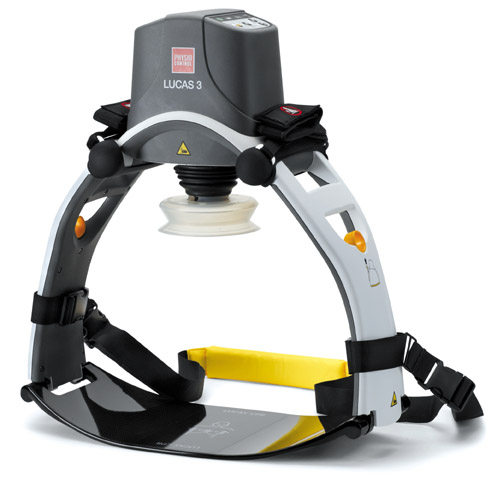
 |
The Reporter covers Miller, Morgan and Camden County in Central Missouri's Lake of the Ozarks and is published once per week on Wednesdays.
Published May 23, 2018
Ambulance district to purchase lifesaving devices

CAMDEN COUNTY – The Camden County Ambulance District (CCAD) voted last week to
purchase six LUCAS CPR devices for the ambulances.
The purchase was not a budgeted item but tax revenue was higher than expected
which allows for the district to purchase the life saving devices now and not
budget it for next year.
The district had projected revenue of $1,605,000 for the fiscal year but
actually received $1,652,000. The district decided to use a portion of the extra
money this year on the LUCAS systems and on the purchase of 14 new radios (one
radio in the front of the ambulance and another in the back).
“Eight or nine years ago we bought seven LUCAS devices,” the CCAD chairman said.
“They are beyond repairable. In fact the last one broke and they sent us a new
one for the cost of the repair.”
The six devices will cost around $15,950 each, including various parts,
batteries, suction cups and other items associated with it.
The district can purchase the LUCAS devices on a lease purchase agreement and
pay for them over the next few years.
The idea, according to the chairman, is to have the devices paid for before they
order the next new ambulance.
“Our next truck will not be ordered for at least 18 months and we won’t receive
it or pay for it for two years,” said the chairman.
The LUCAS CPR device is an automated chest compression unit that fits over the
patient’s chest and does chest compressions for cardiac victims.
The device fits around the chest of the victim and a suction-cup device rests
against the chest and compression can begin. The suction-cups can be used three
times and then have to be discarded. Each suction cup costs around $25.
The LUCAS website explains how the system works and why they feel it is superior
to manual chest compressions by an individual.
“In order to be able to save the lives of sudden cardiac arrest patients and
avoid neurological damage, a steady supply of oxygen to the heart and brain is
necessitated. Life-sustaining circulation can be created through effective and
uninterrupted chest compressions. Performing manual chest compressions of high
quality is both difficult and tiring, and impossible in certain situations. The
quality varies depending on who provides CPR and deteriorates quickly after only
one or two minutes.
“The LUCAS Chest Compression System is a safe and efficient tool that
standardizes chest compressions in accordance with the latest scientific
guidelines. It provides the same quality for all patients and over time,
independent of transport conditions, rescuer fatigue, or variability in the
experience level of the caregiver. By doing this, it frees up rescuers to focus
on other life-saving tasks and creates new rescue opportunities.
“Experimental studies show that the mechanically controlled LUCAS compressions
are able to sustain a higher blood flow to the brain and heart compared to
manual compressions. The side-effects are similar as for manual compressions.
LUCAS does compressions according to guidelines - on the middle of the chest,
not more, not less.”
The device is portable, easy to carry and can be applied to the patient in less
than 20 seconds, according to LUCAS.
The purchase of the six systems will mean that each of the ambulance district’s
seven ambulances will have the chest compression units on board.
The handheld radios that are currently used are approximately 12 years old. The
old radios will not be disposed of but will be kept for backup in case one of
the new ones goes out.
The 14 new radios will cost around $12,000.
The CCAD operates five ambulance stations located in Camdenton (headquarters),
Climax Springs, Macks Creek, Linn Creek and Montreal.
All content is Copyright 2018 by Reporter Publishing, L.L.C. Unauthorized reproduction is prohibited without written permission.